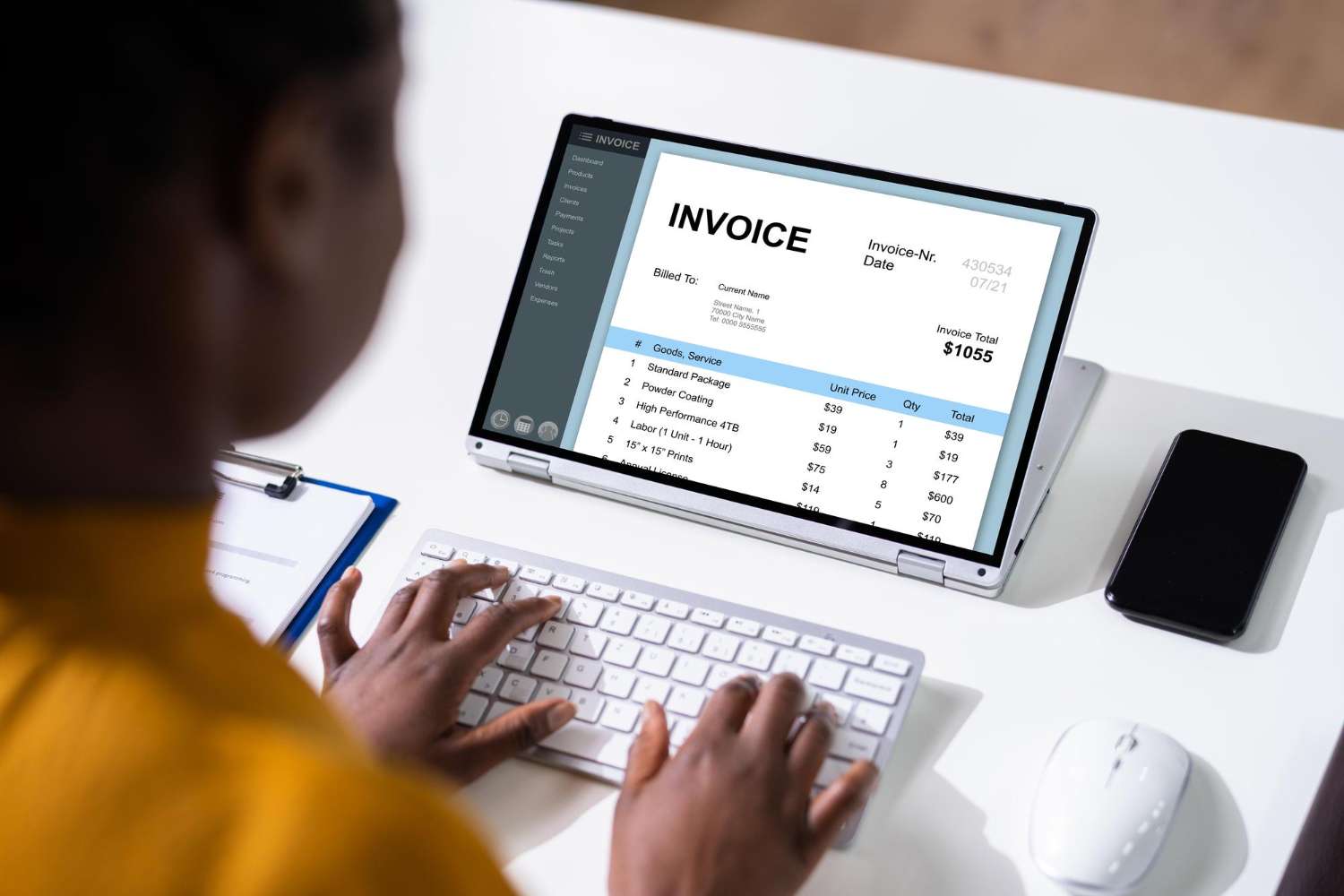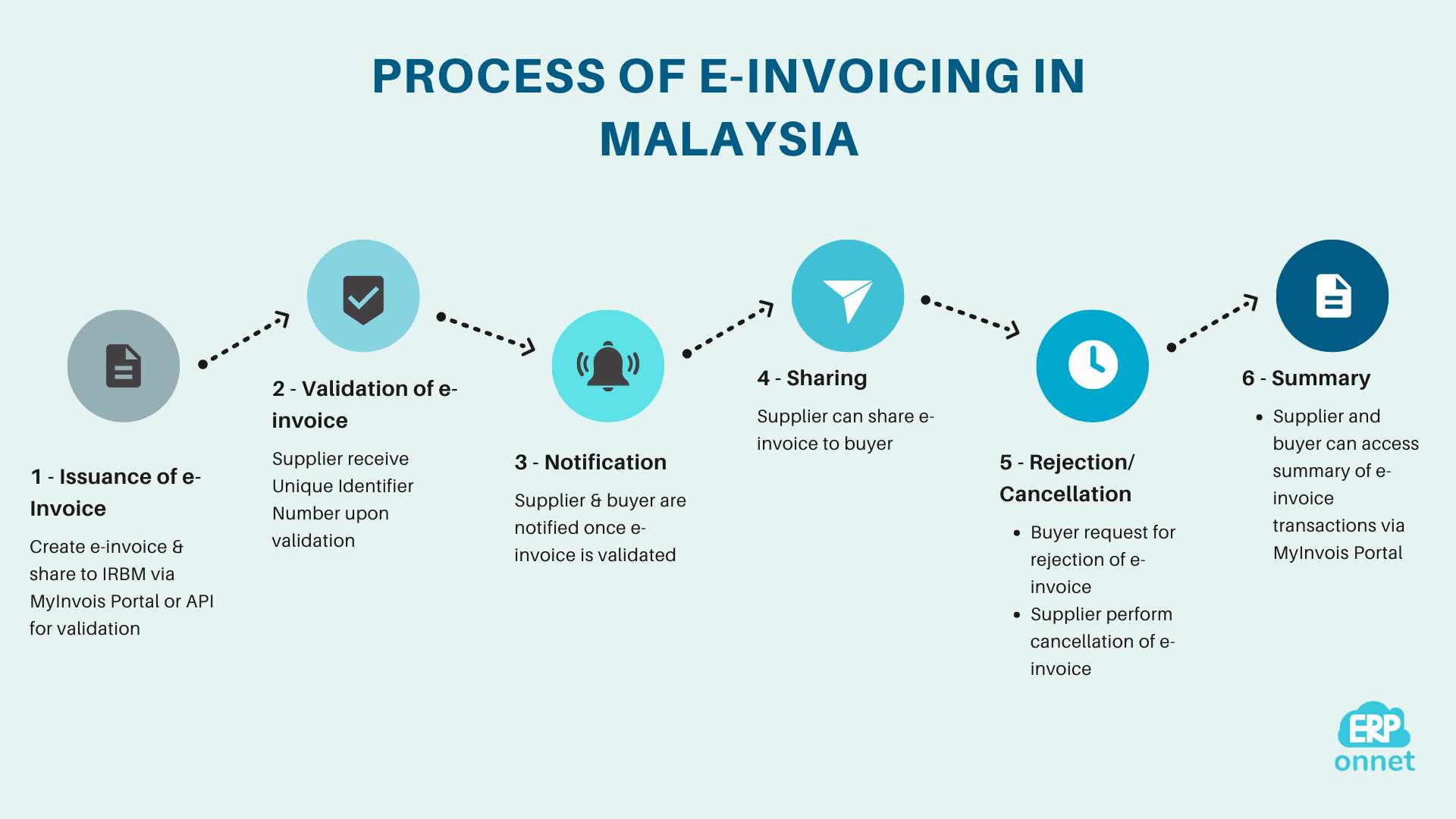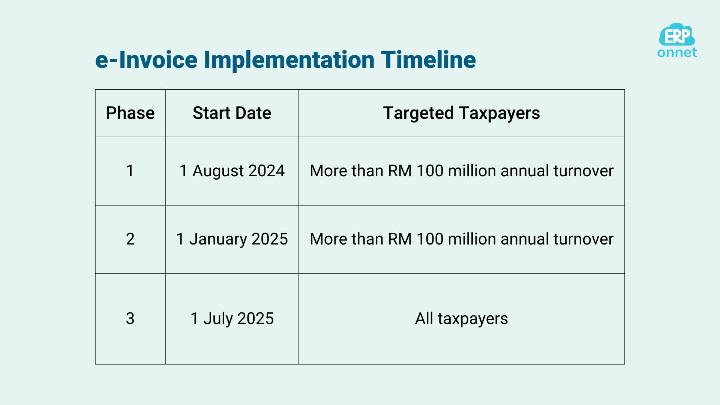e-Invoicing system will begin with businesses that have RM100mil turnover in August 2024, followed by businesses that have RM50mil turnover and RM25mil turnover before applying to individuals.
Chief Executive Officer of IRB, Mohd Nisom Sairi
Are you ready for e-invoicing in Malaysia?
With only 5 months remaining until 1 August 2024, e-invoicing becomes mandatory for Malaysian businesses that exceed RM 100 million annual revenue.
Table of Content
- What Is e-Invoicing in Malaysia?
- When You Should Start Implementing e-Invoicing?
- Process of e-Invoicing In Malaysia
- 4 Types of e-Invoices in Malaysia
- 2 Types of e-Invoice Model
- Why Choose Odoo for Malaysia e-Invoicing?
You can always access to e-Invoice portal and e-Invoice Guideline to check out the latest announcement.
 What Is e-Invoicing In Malaysia?
What Is e-Invoicing In Malaysia?
e-Invoicing, or electronic invoicing is a digital proof of a transaction between a seller and a buyer, replacing paper-based or electornic documents.
You might be curious about what are the differences between e-invoice and traditional invoice. The only difference between e-invoice and traditional invoice lies in the format.
A traditional invoice is typically presented on paper or electronically in formats like PDF, Excel, or Word. In contrast, e-invoice is created in XML or JSON format, allowing for automated processing by systems.
When You Should Start Implementing
e-Invoicing?
In this section, let's check when your business needs to adopt e-invoicing according to the implementation timeline prepared by IRBM.
Although large enterprises kick-start e-invoicing first, however, most businesses in Malaysia are involved in the supply chain. This means even smaller businesses might need to use e-invoicing earlier to keep things running smoothly.
 Process of e-Invoicing In Malaysia?
Process of e-Invoicing In Malaysia?
After choosing the e-invoicing transmission method you prefer, let's explore how e-invoicing works in Malaysia.
After transaction is made, supplier creates an e-invoice and submits it to IRBM
IRBM will validate e-invoice in real-time
Once validated, supplier will receive a Unique Identifier Number from IRBM that allows traceability
Both supplier and buyer will receive notification of validated e-invoice
Supplier has the responsibility to share e-invoice embedded with QR code to buyer
- Upon issuance, buyer can request for rejection of e-invoice or the supplier to cancel the e-invoice within 72 hours.
Finally, both supplier and buyer can access a summary of e-invoice transactions via MyInvois Portal
4 Types of e-Invoices In Malaysia
Here are four different types of e-Invoices you will encounter:
- Invoice: Standard document records the sales transactions between supplier and buyer, including self-billed invoices
- Credit note: Issues credit note to buyer in case there are returned goods, overcharging, or discounts
- Debit note: Issues debit note to buyer when there are additional charges on a previously issued e-invoice
- Refund: To confirm customer returns and specify the refunded amount
2 Types of e-Invoice Model
You have two options for the e-invoice model to choose from when submitting e-invoices to the IRBM portal for validation:
- MyInvois Portal
MyInvois portal is a platform hosted by IRBM for manual e-invoice submissions, open to all taxpayers for free. - Application Programming Interface (API)
API allows automatic data transmission between taxpayers' business software and MyInvois system. This approach is ideal for businesses handling large transaction volumes.
Why Choose Odoo for Malaysia e-Invoicing?
You can choose to use MyInvois portal for manual e-invoicing, but it can be extremely slow when you have a lot of invoices to deal with because you have to input data yourself.
If you're leaning towards automated e-invoicing with ERP API integration, keep reading.
Common e-invoicing ERP systems like SAP, Oracle, and Odoo are designed to meet global standards, and adapting them to fit local Malaysian requirements can be quite challenging.
That’s why finding ERP system provider who is familiar with Malaysian business landscape is key - they get your needs and can tailor a localized solution just for you.
And here’s something to take note: Integrating your business software with the government’s PEPPOL network might raise compatibility issues. So, it’s not about having good ERP software only; ongoing support from your provider is crucial to fix issues fast.
So, remember to look for ERP system provider committed to having your back whenever you need it.
